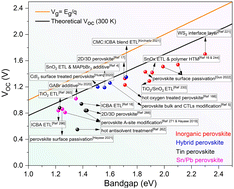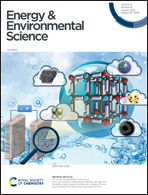The high open-circuit voltage of perovskite solar cells: a review
Abstract
Perovskite solar cells (PSCs) have made incredibly fast progress in the past years, with the efficiency approaching 26%, which is comparable to those of the best silicon solar cells. One of the features of PSCs that make them stand out among all photovoltaics (PVs) is their high open-circuit voltage (VOC) although they are made by solution processes. Compared to other solution-processed PVs such as organic photovoltaics and dye-sensitized solar cells, and vacuum-processed PVs like CdTe and CIGS, the loss in VOC caused by non-radiative recombination in the case of PSCs is considerably low, which is even as low as that observed for vacuum-processed Si. The defect-tolerant nature of perovskites helps in preventing non-radiative recombination and therefore yields high VOC in PSCs. By comparing the achieved performance with the Shockley–Queisser (S–Q) limits, it can be determined that while the photocurrent of PSCs reaches almost the theoretical limit, there is still room to improve the VOC, especially in the case of all-inorganic and tin-based perovskites. Hence, improving the VOC becomes critical for promoting device efficiency further. In this review paper, we focus our discussion on the recent development of VOC of PSCs by beginning with a theoretical review highlighting the critical role of VOC enhancement and the necessity of non-radiative recombination suppression for device performance improvement. As the recombination both in the bulk of the perovskite and on the surface/interfaces with charge transport layers is important, different methods depending on the perovskite composition and the nature of the electron transport layer (ETL) and hole transport material (HTM) have been developed to minimize recombination in the perovskite and at the interfaces. We provide a comprehensive review of different reported strategies for reducing undesirable recombination in the perovskite film and at the interfaces, by dividing our discussion into four parts based on the light absorbers used: organic–inorganic hybrid perovskites, all-inorganic perovskites, tin-based perovskites, and bismuth-based perovskites (analogs). Finally, a summary with an outlook on how reducing perovskite film defects and developing more suitable charge transport layers can further promote the VOC and expand the practical application prospects of PSCs is presented.



 Please wait while we load your content...
Please wait while we load your content...